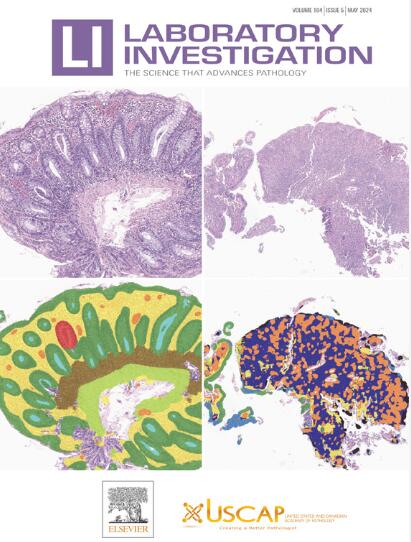Improved Prognostic Stratification With 2023 International Federation of Gynecology and Obstetrics Staging in Endometrial Cancer Reflecting Poor Prognosis of Aggressive Histological Types and p53 Abnormality
IF 5.1
2区 医学
Q1 MEDICINE, RESEARCH & EXPERIMENTAL
引用次数: 0
Abstract
This study compares the distribution and prognostic impact of the 2009 and 2023 International Federation of Gynecology and Obstetrics (FIGO) staging systems for endometrial cancer and their impact on the 2022 European Society for Medical Oncology (ESMO) risk classification. Patients were restaged according to the 2009 FIGO staging system, the 2023 FIGO staging system, and the 2023 FIGO staging system with molecular classification. Risk groups were assigned according to the 2022 ESMO guidelines using each staging system. Among 679 patients, 139 (20.5%) experienced stage migration when transitioning from the 2009 FIGO staging system to the 2023 FIGO staging system with molecular classification, with 121 (17.8%) upstaged and 18 (2.7%) downstaged. Most changes were from FIGO stage I to stage II, primarily due to p53 abnormality, aggressive histological type, or extensive/substantial lymphovascular space invasion. Hazard ratios for overall survival, disease-free survival, and event-free survival increased with advancing stage groups in all systems, showing the greatest differences when the 2023 FIGO staging system with molecular classification was used. The newly introduced FIGO stages IC, IIC (both representing aggressive histological types), and IICmp53abn (associated with p53 abnormality) in the 2023 FIGO staging system were associated with worse outcomes, similar to FIGO stage III. The prognostic predictability of the 2022 ESMO risk group was minimally affected by the transition from the 2009 FIGO to the 2023 FIGO staging system, as the factors introduced in the new FIGO system were already incorporated into the 2022 ESMO risk classification. Only 17 (2.5%) patients experienced a change in their assigned risk group. The 2023 FIGO staging system showed improved prognostic stratification over the 2009 FIGO staging system, particularly by reflecting the poor prognosis of aggressive histological types and p53 abnormality.
2023 FIGO分期对子宫内膜癌预后分层的改善反映了侵袭性组织学类型和p53异常的预后不良。
本研究比较了2009年和2023年国际妇产科联合会(FIGO)子宫内膜癌(EC)分期系统的分布和预后影响,以及它们对2022年欧洲肿瘤医学学会(ESMO)风险分类的影响。根据2009年FIGO分期系统、2023年FIGO分期系统、2023年FIGO分期系统及分子分类对患者进行重新分期。根据2022年ESMO指南使用每个分期系统分配风险组。在679例患者中,139例(20.5%)患者在从2009年FIGO分期系统过渡到2023年FIGO分期系统时发生了分期迁移,其中121例(17.8%)患者表现较好,18例(2.7%)患者表现较差。大多数变化发生在FIGO I期至II期,主要是由于p53异常、侵袭性组织学类型或广泛/实质性淋巴血管间隙浸润。在所有系统中,总生存率、无病生存率和无事件生存率的风险比随着分期分组的推进而增加,当使用带有分子分类的2023 FIGO分期系统时,差异最大。2023年FIGO分期系统中新引入的FIGO分期IC、IIC(均代表侵袭性组织学类型)和IICmp53abn(与p53异常相关)与较差的预后相关,与FIGO分期III相似。从2009年FIGO分期系统过渡到2023年FIGO分期系统对2022年ESMO风险组的预后可预测性影响最小,因为新FIGO分期系统中引入的因素已经纳入2022年ESMO风险分类,只有17例(2.5%)患者的指定风险组发生了变化。与2009年FIGO分期相比,2023年FIGO分期系统的预后分层有所改善,特别是反映了侵袭性组织学类型和p53异常的不良预后。
本文章由计算机程序翻译,如有差异,请以英文原文为准。
求助全文
约1分钟内获得全文
求助全文
来源期刊

Laboratory Investigation
医学-病理学
CiteScore
8.30
自引率
0.00%
发文量
125
审稿时长
2 months
期刊介绍:
Laboratory Investigation is an international journal owned by the United States and Canadian Academy of Pathology. Laboratory Investigation offers prompt publication of high-quality original research in all biomedical disciplines relating to the understanding of human disease and the application of new methods to the diagnosis of disease. Both human and experimental studies are welcome.
 求助内容:
求助内容: 应助结果提醒方式:
应助结果提醒方式:


